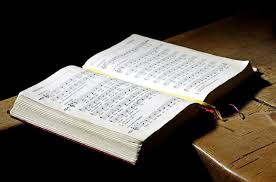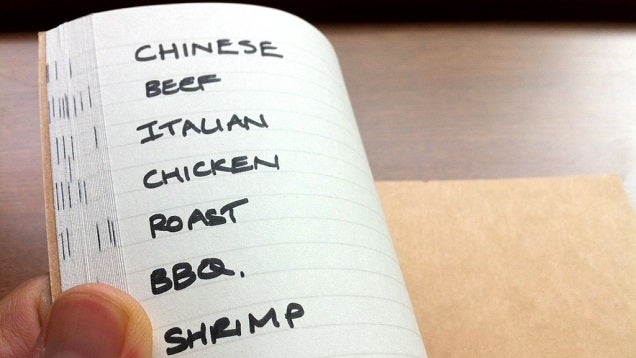Too Many Songs! How to Master the Hymnal
 A few weeks ago I was speaking to a member of the choir at my church about the state of our music choices during liturgies. I am only a guy in the pew with my young family, but I thought there were certain times when the music choices reflected poorly in some liturgical seasons. Songs during the season of Lent, for example, should reflect a tone of repentance and personal lament, and not merely be the same songs we sing throughout the year.
A few weeks ago I was speaking to a member of the choir at my church about the state of our music choices during liturgies. I am only a guy in the pew with my young family, but I thought there were certain times when the music choices reflected poorly in some liturgical seasons. Songs during the season of Lent, for example, should reflect a tone of repentance and personal lament, and not merely be the same songs we sing throughout the year.
She countered with her own lament, how the music was limited because, well, “the songs in the hymnal are too limited.” In other words, we have a hymnal that lacks certain songs that our choir would prefer to use, but cannot.
“Not Enough Songs”
I do not want to make light of this dilemma, as I recognize that many choirmasters and worship leaders feel the same sense of limitation, when they are handed a bound book and are expected to abide by its contents. Even if one has a missallette subscription, there is always a chance that a favorite song of the congregation would be unceremoniously dropped after a year’s use.
But at the same time, looking at the contents of a hymnal or a missallette is extremely intimidating. How often can one do so without the feeling of being overwhelmed? There are times where one forgets a certain song is in its contents, and you can just as easily bypass that for an inferior song for a liturgy.
“Too Many Songs”
After our conversation, I took a deeper look at our hymnal, and made some discoveries. If I were to excise the Mass parts, the Psalms, and the readings, what remains is about 300 songs. Of these songs, 100 are focused on specific seasons or special days (including a few patriotic songs).
I have my own missallette subscription, so I picked that up. A music issue contains over 400 choices, the vast majority of which are unseasonal songs. Individual missallettes add about 100 more songs that pertain to specific seasons.
Three to five hundred choices. Let that sink in.
If a parish sang four different songs each and every week, they could sing a little over 200 songs a year, without a single overlap. As it goes, a healthy singing parish could have between 40 and 60 songs used on a rotating basis, not including songs that are seasonal.
Music Publishers Try To Please Everyone
It is precisely for this reason that I simply do not buy the argument that music publishers are out to promote a contemporary liturgy at the expense of chant or traditional hymns. Have these folks looked at a missallette or hymnal lately? Cries to add more traditional chant have been heeded. They’re there, alongside the popular “Come, Now Is the Time to Worship.”
Nonetheless, I feel the pain of the individual music director/worship leader who feels overwhelmed over the hundreds of songs available.
The Simple Hack That Will Help
So in light of this, I offer this help; which I discovered recently via Lifehacker. This was written explicitly for those who use paper notebooks for school, but I find that this works even better for those who wish to master the contents of their hymnals.
Get out a piece of paper, and on it write a list song categories that interest you.
For example, on my page, I would write the following:
- POPULAR SONGS IN OUR PARISH
- NEW/UNFAMILIAR SONGS
- PUBLIC DOMAIN SONGS
- CHANT
- SONGS SUNG DIRECTLY TO GOD
- SONGS EASY TO LEARN
- SONGS FOR YOUTH EVENTS
etc.
Your list would invariably be different.

Replace this list (food) with hymn categories, such as “POPULAR”, “NEW/UNFAMILIAR”, “PUBLIC DOMAIN”, etc.
Note that I would refrain from such a list “SONGS I WOULD NEVER DO,” because it defeats the purpose. The goal is to draw attention to songs you would want to use, not draw attention to songs you find problematic (for whatever reason).
I would also refrain from the list songs that are affiliated with a specific liturgical season if the hymnal already has made that designation. This would be a waste of time.
The Master-Stroke Step
Once you have this written, have this page affixed to the back cover of your hymnal. Note that in these sections, the lines of a notebook work as a natural reference point.
Then, go thru the contents of the hymnal, page by page, and with a Sharpie pen, make a marking at the end of the page in the very area where your song designation on the last is at. (When you do this, you may need to make this marking with an index card underneath it, so that it would not bleed onto the following pages).
For example, you may find the song “For The Beauty of the Earth” in your hymnal contents. Suppose, for the sake of argument, that this song is unfamiliar to your congregation, but it is in the public domain, and it is also sung directly to God. Using your newly-written list (affixed to your back cover) as a guide, you note that the song applies equally to the third and fourth item. You would make two markings on the side of your page so that it would be aligned with both “PUBLIC DOMAIN SONGS” and “SONGS SUNG DIRECTLY TO GOD.”
Continue this until you have done every page.
The Result of Implementing This Process
The marking is on the edge of the page will be made visible when you begin flipping through the pages, so that you can easily pinpoint those songs that inspire you to learn a new (or older) song, or quickly find songs that appeal to a specific type of liturgy. For example, if you want to spend time looking over the music that has been added within the last few years, you can easily flip to such a page. Or, if you want to find those songs you are confident your congregation can pick up, you can flip to only those pages.
It is my hope that, in doing this, one can simplify the contents of their musical resources before them, and pinpoint those very songs they feel they could learn on their own, and introduce to their congregations.
H/T: Lifehacker.com
EDIT: Math correction









Nick, how about a picture or two to demonstrate your method?
I’m sorry for not having pictures that fully demonstrated this process.
That said, I had hoped that the Lifehacker links would be the source of pictures instead. Except, instead of using their example (where they have food as examples), you would replace that with those bulleted items in my article, or any other non-typical indexed categories that you would come up with.
ETA: I just added the picture from Lifehacker. Changing the words to the categories in the article, and you can see how this works.
I can see what Nick means. I would go one step further and COLOR the designations. Each item in your list is a different color. It is the same principle as tab dividers in a phone book or dictionary. You look thru the hymnal and look for the color designation or the mark location (up/middle/down) on the side of the page that corresponds to what type of song you are looking for and VOILA! You have found something that you could use for that week’s liturgy.
I think that is what Nick means with his system.
Interesting idea with different colors. Let me know how that works out for you! (I’m more than happy to make adjustments to this post).